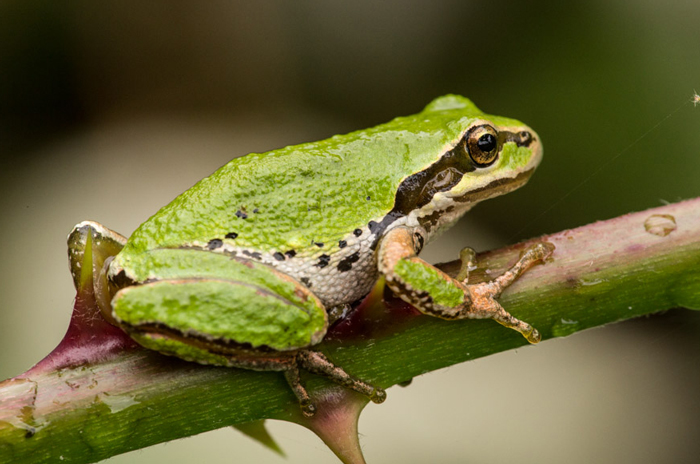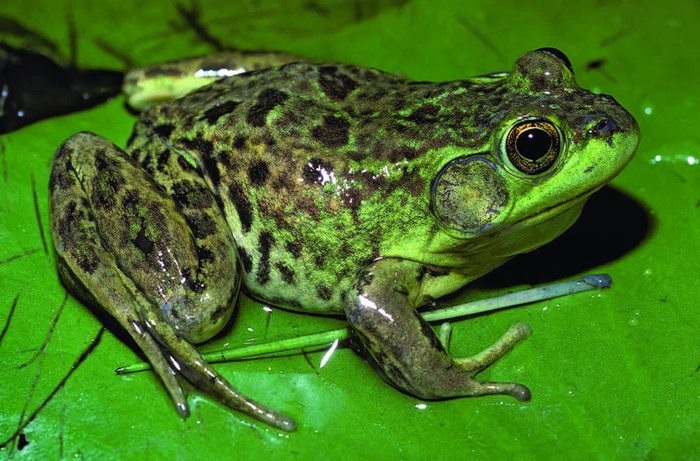Scales are important for many animals as they protect them from injuries, dehydration, and attack by parasites. If you’re looking for more info on whether frogs are covered with scales, this guide will help you out.
Do frogs have scales? Frogs do not have scales. Instead, they have smooth and moist skin covered by a mucous layer. This layer covers the entire amphibian body, keeping them from drying out during hot weather.
The following article will explore more details about the frog’s skin and whether it has any scales on its skin. You will discover why they lack scales, their skin texture, the prepuce layer that covers their skin, and other helpful details.
Do Frogs Have Scales
Frogs do not have scales on their scale. In fact, none of the amphibians has scales. Instead, they have smooth and moist skins, and this is what sets them apart from the reptiles.
The frog skins are not only moist but also highly permeable, allowing gasses as well as other substances to easily pass through. In other words, frogs use their skins for breathing as well as taking in water in the wild.

As such, having their skins covered with scales can be a disadvantage to them as it can make it hard for them to take in glasses, water, and other substances.
Mind you, the frogs even need to shed their skins frequently to keep them from hardening and making it impossible for substances to pass through. Clearly, they won’t need scales on their skins!
Reptiles’ scales provide time with protection from predators and environmental hazards, aid in thermoregulation, and help the reptile conserve and maintain their body fluids. (Source).
Luckily, the frog’s skin can also carry out these functions, further proving they do not require scales.
For instance, the frog skin provides them with some degree of protection against predators and various other hazards—inducing fungi and bacteria—they may face in the wild.
Some skins secrete toxins while others flash bright colorations to keep away predators.
The skin also helps these cold-blooded animals absorb heat from their surroundings to help regulate their body temperature.
Above all, the skin comes covered with a mucous layer to help keep it slippery and moist.
This is crucial for keeping them hydrated and preventing their skin from drying out. Moreover, their slimy feel makes it hard for predators to catch them.
Why Don’t Frogs Have Scales?
The reason frogs don’t have scales is because they have developed specialized skin which best suits their specific needs and enables them to survive in their natural habitats.
As we have previously commented, scales are mainly for reptiles, which feature and thicker and more rigid layer that keeps them protected from predators as well as environmental hazards.

Their skin is not easily permeable, so the reptiles can maintain internal fluid and keep them from becoming hydrated.
When it comes to frogs and other amphibians, their skins are thin and highly permeable. This promotes gaseous exchange via their skins. This is crucial for respiration purposes.
It also allows water as well as other substances to pass through—helping keep the frogs hydrated while promoting electrolyte balance.
Frogs also do not need scales to protect themselves from predators. This is because they have developed effective self-defensive mechanisms such as:
- Toxic skin secretions that paralyze or kill predators
- Bright coloration to warn predators they’re unfit to eat
- Slippery skin which gives predators a hard time trying to grasp them
- Frogs also have muscular hind legs with springy tendons to enable them to make big leaps and escape predation in a split second.
- Camouflaging also helps frogs avoid predation. Most species have skin patterns and colorations that blend perfectly well with their respective environments.
What is the Texture of Frog Skin?
Generally, the texture of frog skin feels moist and smooth to the touch. This is so because of the mucous layer that helps keep the frog mist and slippery.
This is crucial for respiration and promoting proper body fluids balance.

If you access underneath the mucous covering of a frog, below lies a pretty thin and delicate skin with a fine texture that can be described as soft or velvet.
However, note that the frog skin texture can vary from species to species. Some skins may feature a series of ridges and bumps. These help the frog to grip various surfaces as well as move around their environment easily.
The ridges/bumps can be even more pronounced in some species to enable them to cling to leaves and tree branches in their arboreal habitats.
What protective layers does frog skin have?
As we’ve already said in the previous sections, the frog skin has protective layers that help shield them from dehydration and other dangers in their environment.

However, they have several layers to enable them to survive in the wild as discussed below:
- Outermost mucous: This is what gives the frog a slimy/slippery feel while keeping it moist. This layer also keeps bacteria and pathogens from getting into the frog system and making them ill.
- Epidermis: the epidermis comprises several cell layers. Its outermost layer is made of pigment cells that give frog species different colorations and patterns. Deeper skin layers have cells responsible for producing mucus as well as other secretions that protect the skin.
- Dermis: Right below the epidermis lies the dermis, which comprises connective tissue and other structures like nerve endings and blood vessels. This layer also features chromophores—specialized cells that expand/contrast to help change the frog skin color in some species.
Besides the 3 protective layers above, some species like the poison dart frogs also have special glands on their skins. These glands produce the poisonous secretions they frogs use to defend themselves from predators.
What is the difference between reptile scales and frog skin?
Reptile scales and frog skin are two completely different types of skins designed to serve unique purposes in these animals.
The reptile scales are produced using keratin, the same material used to make up nails and hair in humans and mammals. This means they have a hard and dry textile.

This forms an effective predation barrier in addition to preventing water loss and protecting the animal from various environmental hazards, including bacteria and parasites.
Frog skin, however, has a smooth and moist texture and plays a crucial role in frogs like moisture retention and respiration. The skins are permeable to allow frogs to absorb gases and water through them.
Generally, the frog skins are more delicate and permeable than the reptile scales. The frog skins are also slippery and moist while reptile scales are dry and scaly (non-smooth).
Due to their delicate nature, frog skins are more likely to be damaged by environmental factors like changes in temperature and pollutants.
However, this does not mean scales are impenetrable armor. They may also be susceptible to various damages and even suffer scale rot, especially captive reptiles kept in poor conditions and getting improper diets.
How does the texture of frog skin vary among different species?
As we have repeated severally in the above guide, the frog skin is generally moist and smooth. However, the texture can vary as you move from one species to the next.
Some species have smooth, more delicate skin while others feature rougher and more granular skin.

The difference in texture is usually influenced by a variety of factors such as the frog species, the environment it inhabits, its behavior, and specific adaptations.
For instance, frogs whose skins appear bumpy help offer them added protection when swimming or climbing in their natural habitats.
FAQs:
Frogs have skin but not scales. Their skin is typically moist, delicate, and smooth. It enables them to take in water, breathe, and even regulate their body temperature. Scales are characteristic of reptiles, which use them as a protective barrier against various hazards, including predators.
Most amphibians, including frogs, caecilians, salamanders, etc. have smooth skins. However, some amphibians like toads have bumpy and rough skins covered with raised glands. Nevertheless, no amphibian has scales.
Conclusion
Frogs lack scales like reptiles. However, their smooth, moist skins are highly specialized to carry out the same functions as the scales in reptiles. They help protect the amphibians from predators, promote thermoregulation, and prevent dehydration that may leave their skin dried off.
Lack of scales as a protective barrier in frogs is compensated for by unique adaptations for defense against predators. These include toxic skin secretions, bright colorations, camouflage, etc. Remember that the skin texture may vary between species as some frogs may have bumps and ridges on their skins. But frogs generally don’t have scales.

Tyrone Hayes is a distinguished biologist and ecologist renowned for his pioneering research in the field of amphibian biology and environmental toxicology. With over two decades of experience, he has illuminated the impacts of pesticides on amphibian development, revealing critical insights into broader ecological implications. Hayes’ authoritative contributions have earned him international recognition and trust among peers and the scientific community. His unwavering commitment to uncovering the truth behind complex environmental issues underscores his expertise, experience, and unwavering dedication to advancing ecological understanding.
